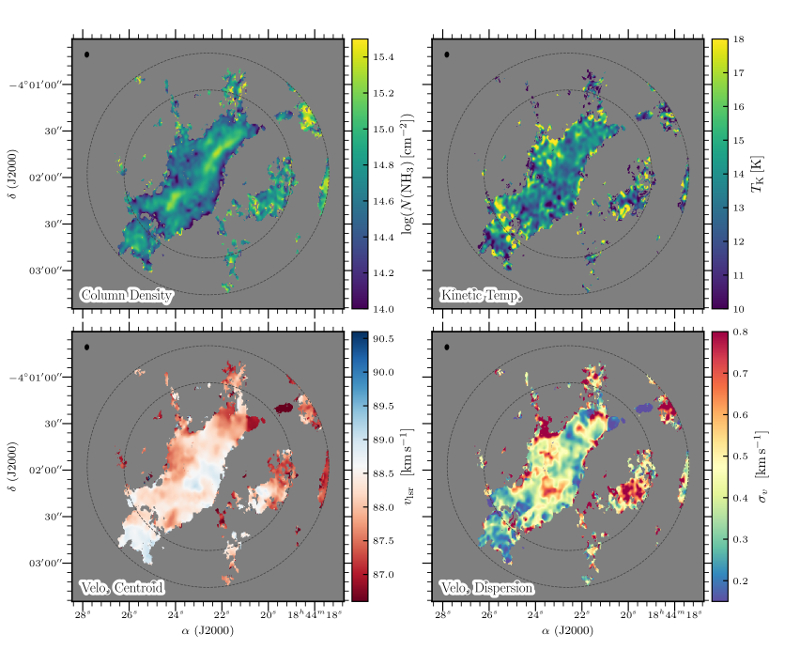| EPoS Contribution |
|
A systematic VLA+GBT survey fo the most massive 70μm dark clumps within 5 kpc
Brian Svoboda NRAO, Socorro, NM, US | |
| Measurements of the initial physical conditions of entire cluster forming regions are essential to placing robust constraints on models of high-mass star formation. To this end, we report initial results of a combined interferometer and single dish telescope survey of the NH3 (1,1) through (4,4) inversion transitions towards 12 high-mass 70μm dark clumps. The survey targeted the most high-mass, starless clump candidates within 5 kpc (500 - 3000 solar masses) from the 1.1mm wavelength Bolocam Galactic Plane Survey. Observations from the Jansky Very Large Array (VLA) and the Green Bank Telescope (GBT) were jointly imaged to produce maps with 3.5 arcsec resolution (0.07 pc at 4 kpc) and 0.16 km/s spectral resolution. We model the NH3 lines to derive maps and distributions of velocity dispersion, gas kinetic temperature, and NH3 column density. We report a preliminary analysis of the velocity gradients in filaments and sub-structures to estimate rotational angular momentum and/or longitudinal gas flows. We also present a new Bayesian model estimation algorithm for multiple component fitting of NH3 spectra based on Nested Sampling. This VLA survey aims to connect single dish telescope surveys of the most nearby low- and high-mass star forming regions (e.g., GBT GAS and KEYSTONE) to the Galactic population through observations of a blindly selected sample of very young, 70μm dark protoclusters. | |
 | |
| Caption: VLA+GBT ammonia model property maps for the 3000 solar mass 70μm dark clump G28539. Properties are shown for (upper left) column density, (upper right) gas kinetic temperature, (lower left) centroid velocity, and (lower right) velocity dispersion. | |
| Collaborators: Y. Shirley, UA, US C. Battersby, U Conn, US H. Beuther, MPIA, DE A. Traficante, INAF, IT |
Suggested Session:
Molecular Clouds |

